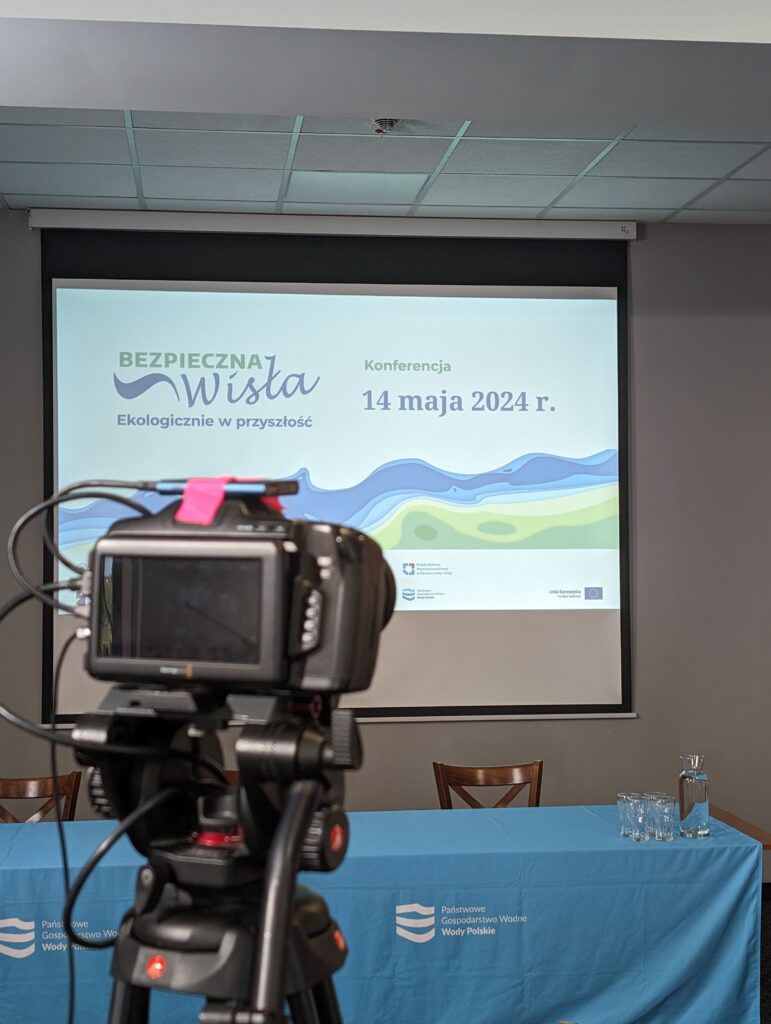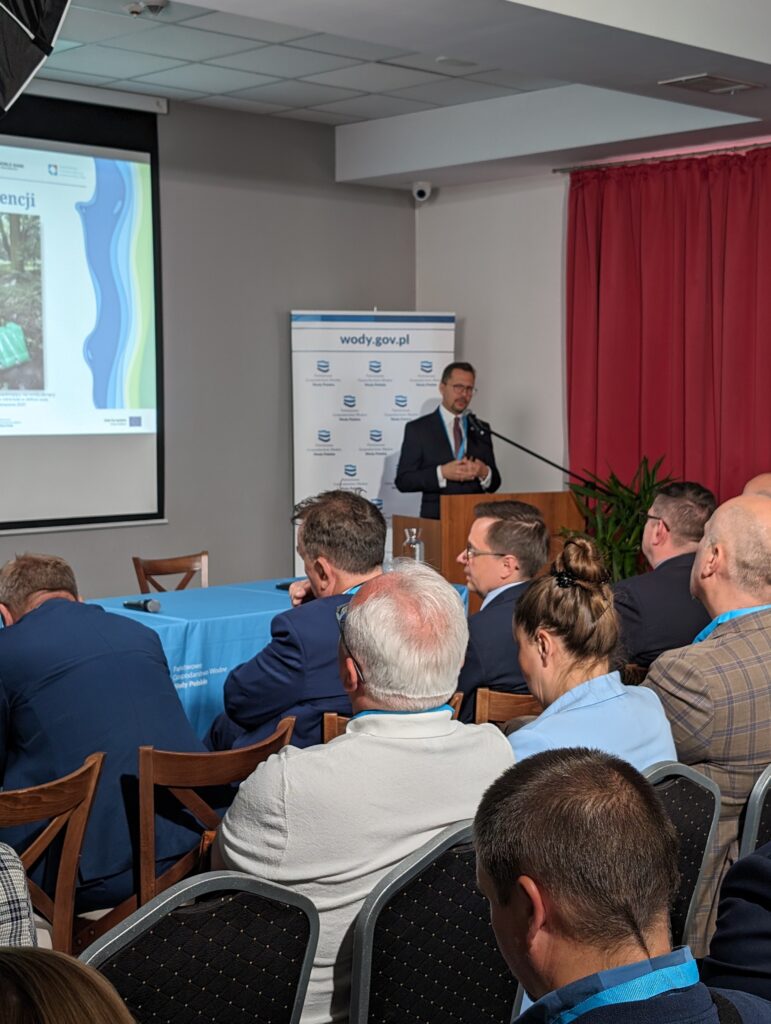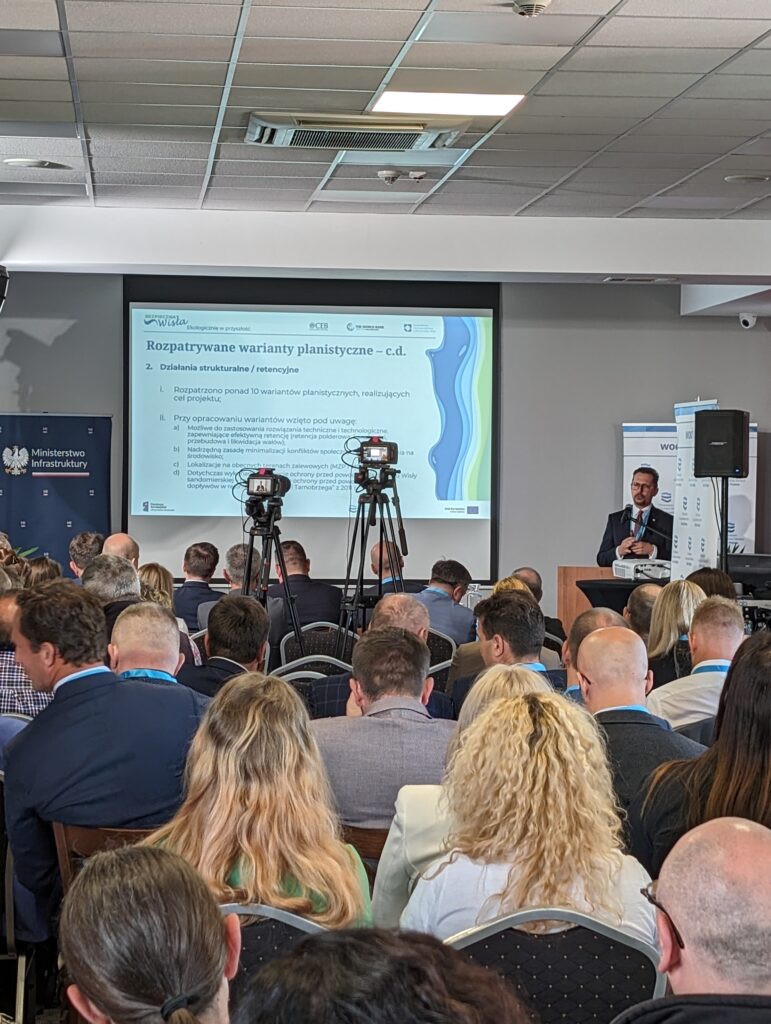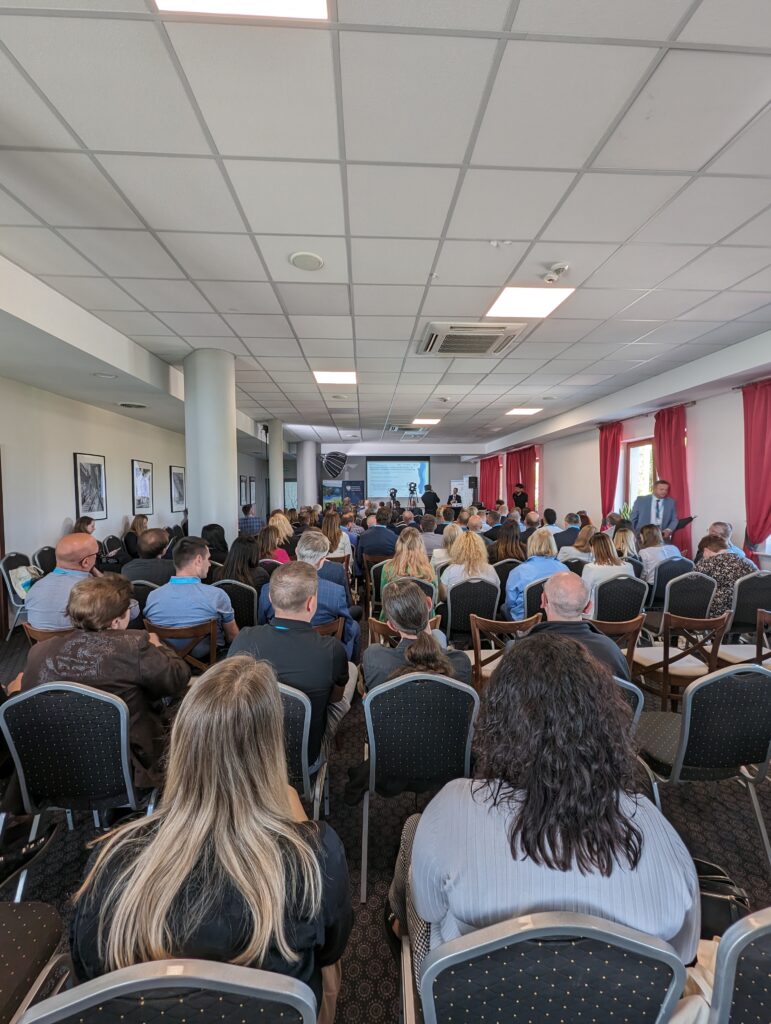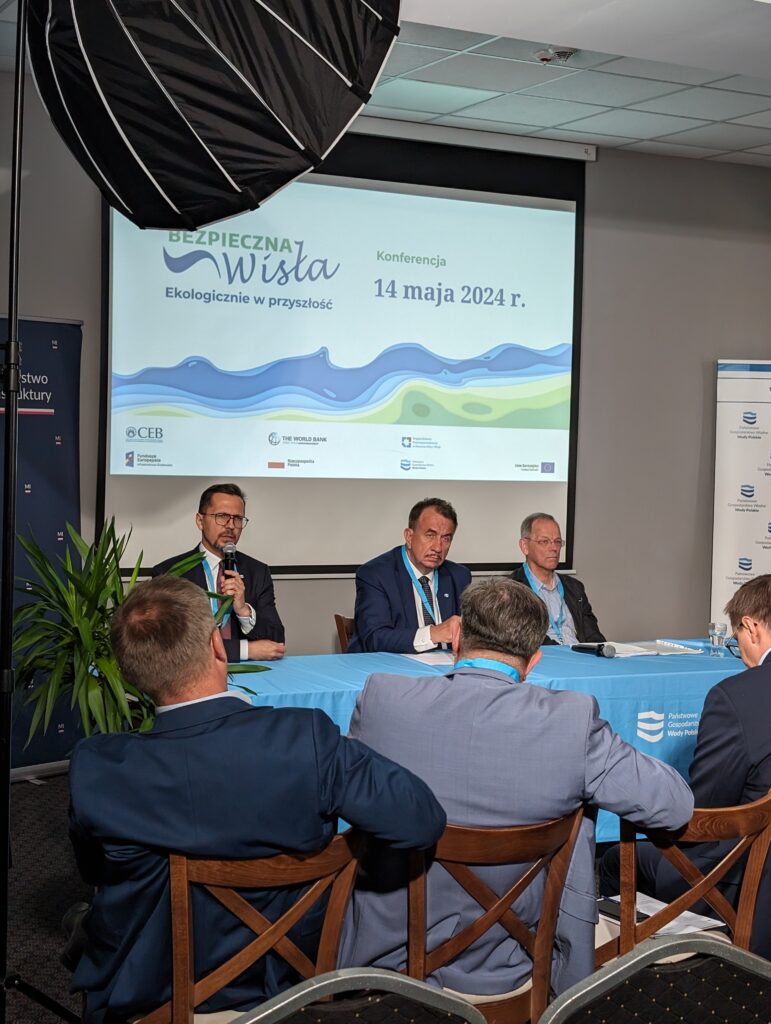The results of an analysis of flood and drought risk in the Upper Vistula area and proposed solutions for the diagnosed problems were presented during a conference held under the “Safe Vistula – towards a sustainable future” program on May 14, 2024. Prof. Janusz Zaleski participated in this event organized in Sandomierz, which is a city hit by the 2010 flood and of key importance for the implementation of the current project.
The new program is formally known as the “Retention activities program as an element of flood risk management in the Upper Western Vistula and Upper Eastern Vistula water region between Kraków and Zawichost”. This program aims to increase the safety of the population living in the Vistula River basin area, with special attention to the Sandomierz Vistula stretch, against flood risk, while maintaining the highest environmental standards not only with respect to hydraulic infrastructure, but also around it. From its inception, it has been developed in close collaboration of the State Water Holding Polish Waters with experts in the area of structural and non-structural hydrological and environmental protection solutions as well as with representatives of local communities, including the authorities of the municipalities located in the flood-prone areas.
Stakeholders from non-governmental organizations, which are vividly interested in grey-blue hydraulic infrastructure, also participated both in the Kraków conference, which inaugurated this project, and in the present conference.
Violent floods a dramatic effect of warming climate
Information about flash floods of unprecedented scale, since this phenomenon started to be recorded and studied, basically continually comes from across the world. It was only in recent weeks that, among others, Dubai, in which the total rainfall in 12 hours was equivalent to the amount of rainfall that usually falls in one year, had to cope with a disaster with tropical characteristics. Tragic accounts lately came from the south of Brazil. Floods caused by the largest torrential rainfall for 80 years hit the state of Rio Grande do Sul, with its capital in Porto Alegre. More than 300 people died in floods and landslides in Afghanistan. The phenomenon of tropical rain has been long known to science, but its severity and propensity to occur in the regions of the world where it has not occurred so far are the result of rapid climate change. Unfortunately, Europe has not been spared from that, including our own country. Apart from local floods and minor flooding that occur several times a year, we also had floods of unprecedented scale in 1997 and 2010 in Poland.
Time for flood protection measures in the Upper Vistula basin
– We rarely pay attention to the fact that flood is not only a powerful element. We need to realize that it is a multi-aspect phenomenon that affects our lives, starting from the economy to the sense of safety of people living in areas at risk of flooding. The flood damage estimated at tens of billions of Polish zlotys caused by the two largest floods that occurred at the turn of the century forces us to take adequate preventive measures in order to mitigate such risks – the Deputy Minister, Przemysław Koperski, said. – It is largely due to the spectacular hydraulic investments, notably the construction of the Racibórz Dolny dry polder and the comprehensive improvements to the so-called Wrocław Floodway System, as well as many non-structural investments that we have successfully addressed this challenge in the Odra River basin. Now, it is a turn for equally effective solutions in the upper stretch of the Vistula River. After the implementation of the “Program of non-structural and flood storage measures being an element of flood risk management in the Little Vistula and Upper Vistula water regions (the sub-basin upstream of Kraków), including flood protection for the city of Kraków”, i.e. the sub-project 5.7.1 under the Odra-Vistula Flood Management Project (OVFMP), in 2021, the time has come to identify measures under the »Retention activities program as an element of flood risk management in the Upper Western Vistula and Upper Eastern Vistula water region between Kraków and Zawichost«” – the RZGW Kraków Director, Wojciech Kozak, said.
“Safe Vistula – towards a sustainable future” is the next stage of measures
The OVFMP sub-project 5.7.2, “Safe Vistula – towards a sustainable future”, is a continuation of the efforts designed to analyze possible additional investments in the Vistula River catchment area that would serve to reduce flood flows and to lower the flood peak. Mateusz Balcerowicz, the Deputy President for flood and drought protection at the State Water Holding Polish Waters, drew attention that in the previous years a range of investments aimed at protecting the most urbanized areas in the Vistula River basin, i.e. the cities of Sandomierz and Kraków, had been implemented. – An example of such activities is, among others, the designing and construction of a flood gate, including associated infrastructure, in the axis of the approach channel to the river port in Sandomierz as well as the expansion of the ring embankment protecting a housing estate in Sandomierz, including the improvements to the Vistula flood embankment from Lwowska St. to the junction with the Koćmierzów embankment. The total value of all the completed investments was PLN 700 million – he informed.
Detailed analysis and multi-option proposals
The program comprises a whole catalog of activities and is accompanied by a number of analyses and studies that will contribute to the most effective implementations. – These are investments that involve both the protection and renaturation of natural floodplains as well as the construction of polders – Wojciech Kozak, the Director of RZGW Kraków that supervises the implementation of the program, said. – An example of the work conducted is, among others, an analysis regarding increasing the catchment water storage capacity through forestation. The analysis was performed for the catchments of the Raba, Wisłoka, Dunajec, and Nida Rivers – W. Kozak added. The potential total water storage capacity can be 6.2 million m3 with the total requirement of 200-250 million m3, as estimated under the program. The proposed maintenance works to be carried out within the diked area, which are consistent with the existing recommendations and good practices as well as in line with the currently applicable restrictions on protected areas, are of partial, though important, significance. The hydraulic analysis has demonstrated that enhanced tree and shrub removal in the diked area will result in improved floodwater flow conditions only locally, but this will not solve the problem of flood risk in the whole region. It is likewise with an increased proportion of grassland within the diked area and in the polders, controlled flooding of the polders as well as the restoration of water storage structures (oxbow lakes, pools) and improvement in their condition. The urban stormwater drainage systems in the cities of Kielce, Tarnów, and Rzeszów, investigated in this respect, also have limited importance for the reduction of fluvial flood effects.
“Safe Vistula – towards a sustainable future” is a project that incorporates the World Bank standards in the preparation of documents under the Strategic Environmental Impact Assessment (SESA).
The conclusions from the Sandomierz conference will be used in the public consultation process. All documents and results of the currently implemented activities will be available at the following website: www.bezpiecznawisła.pl.
